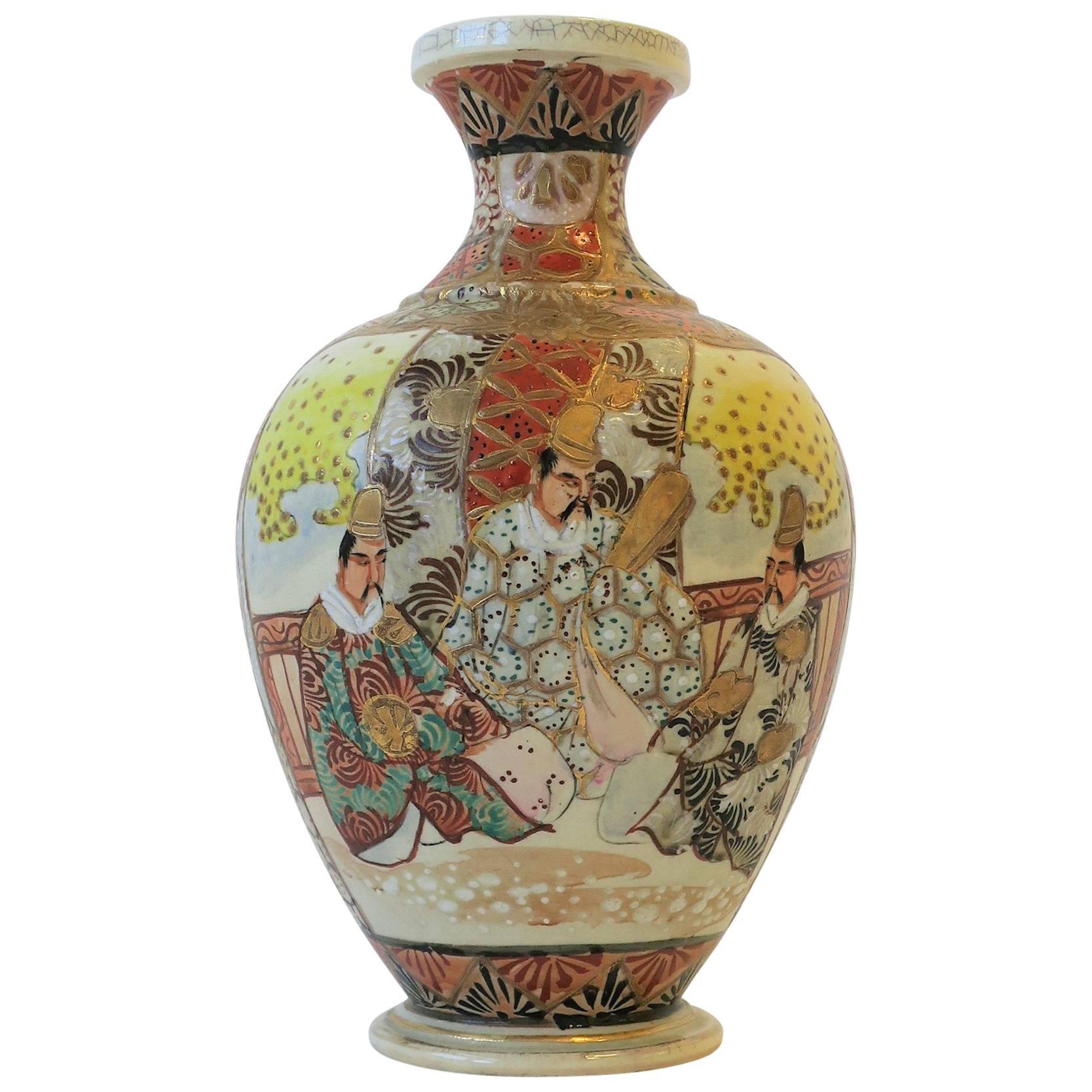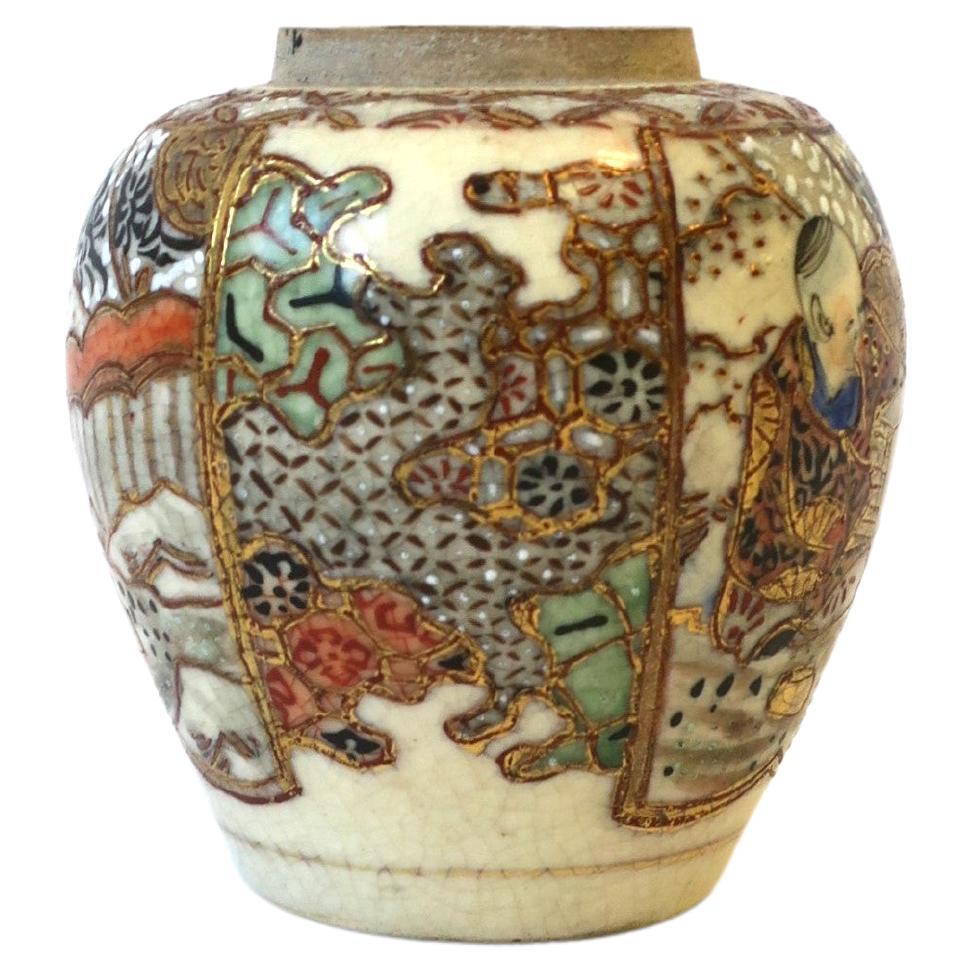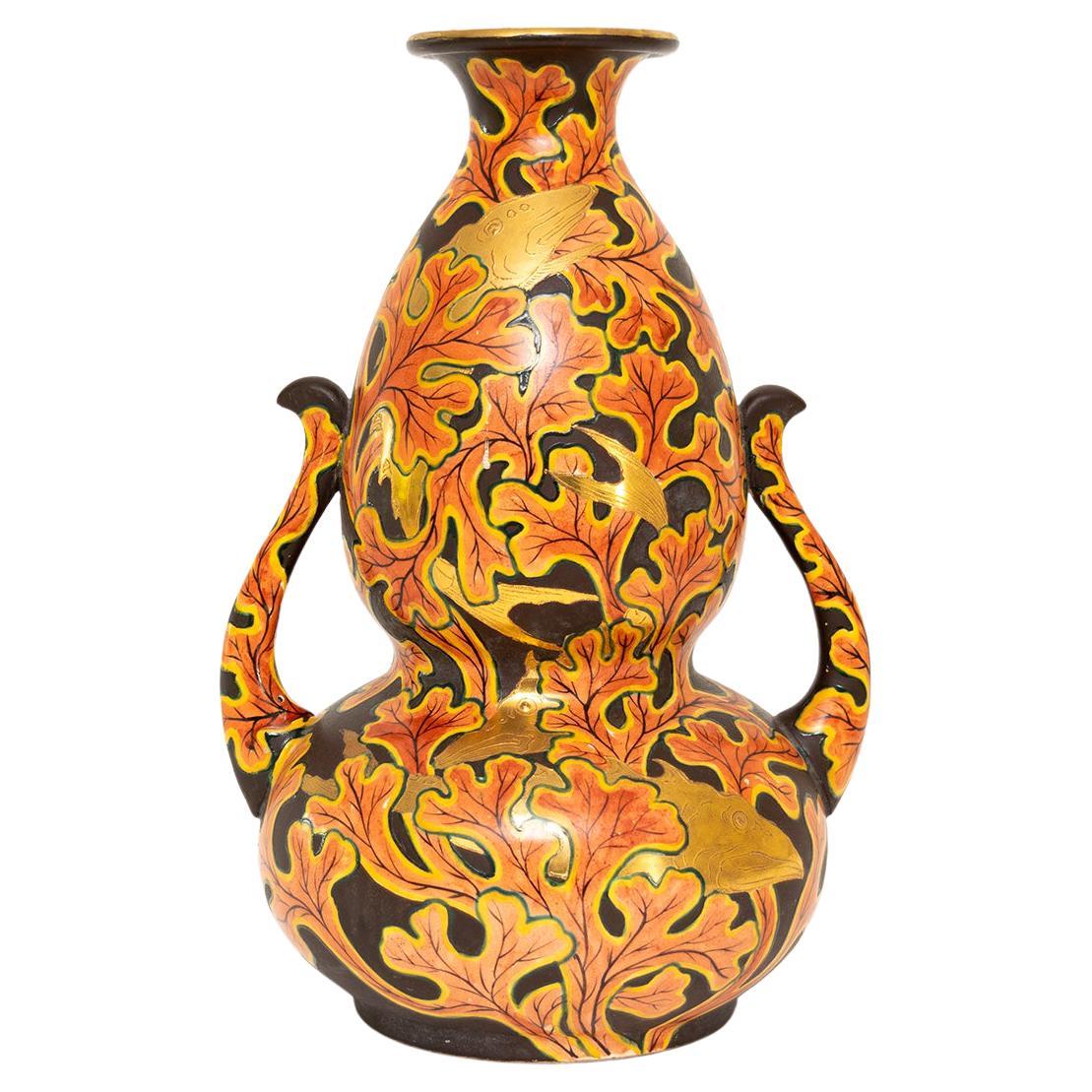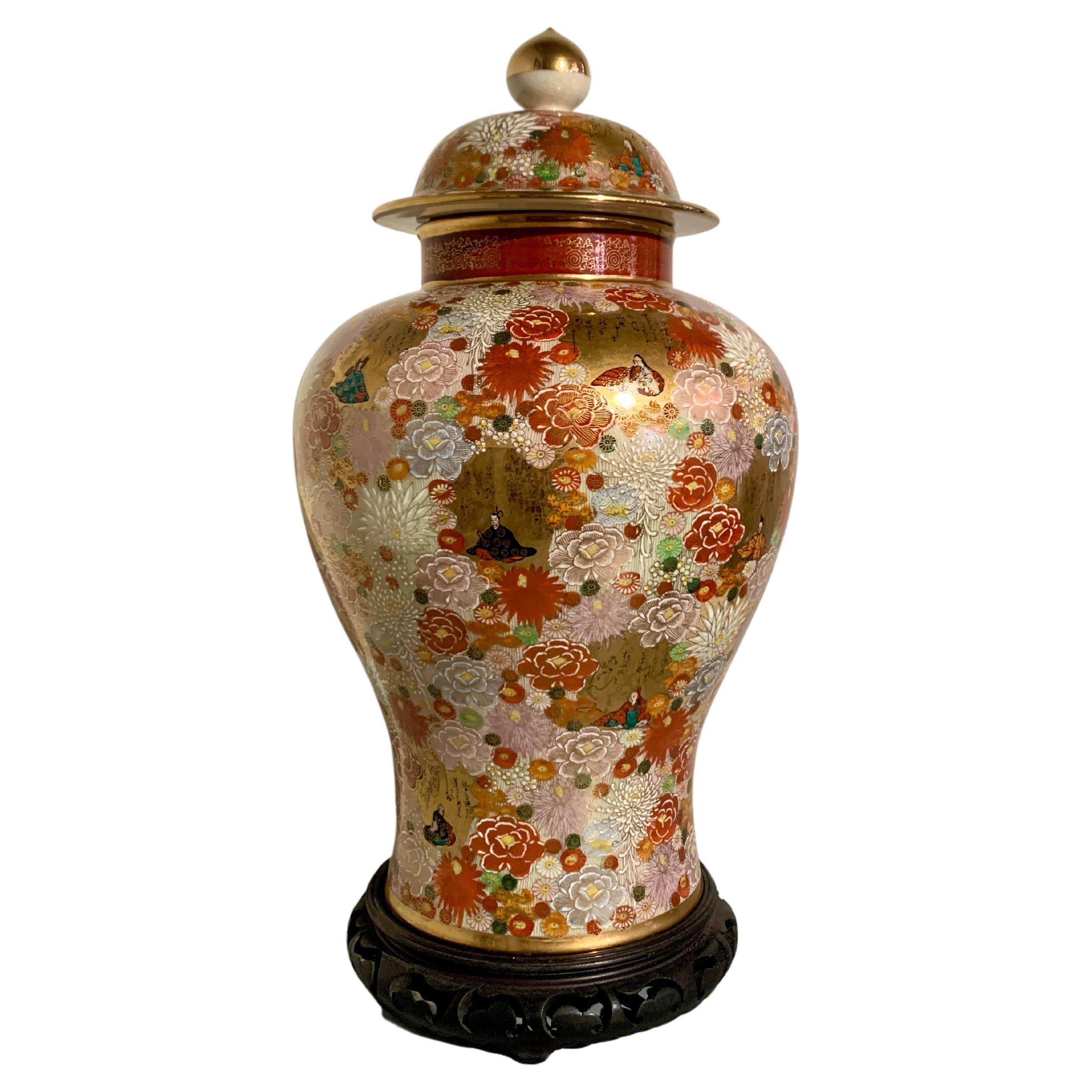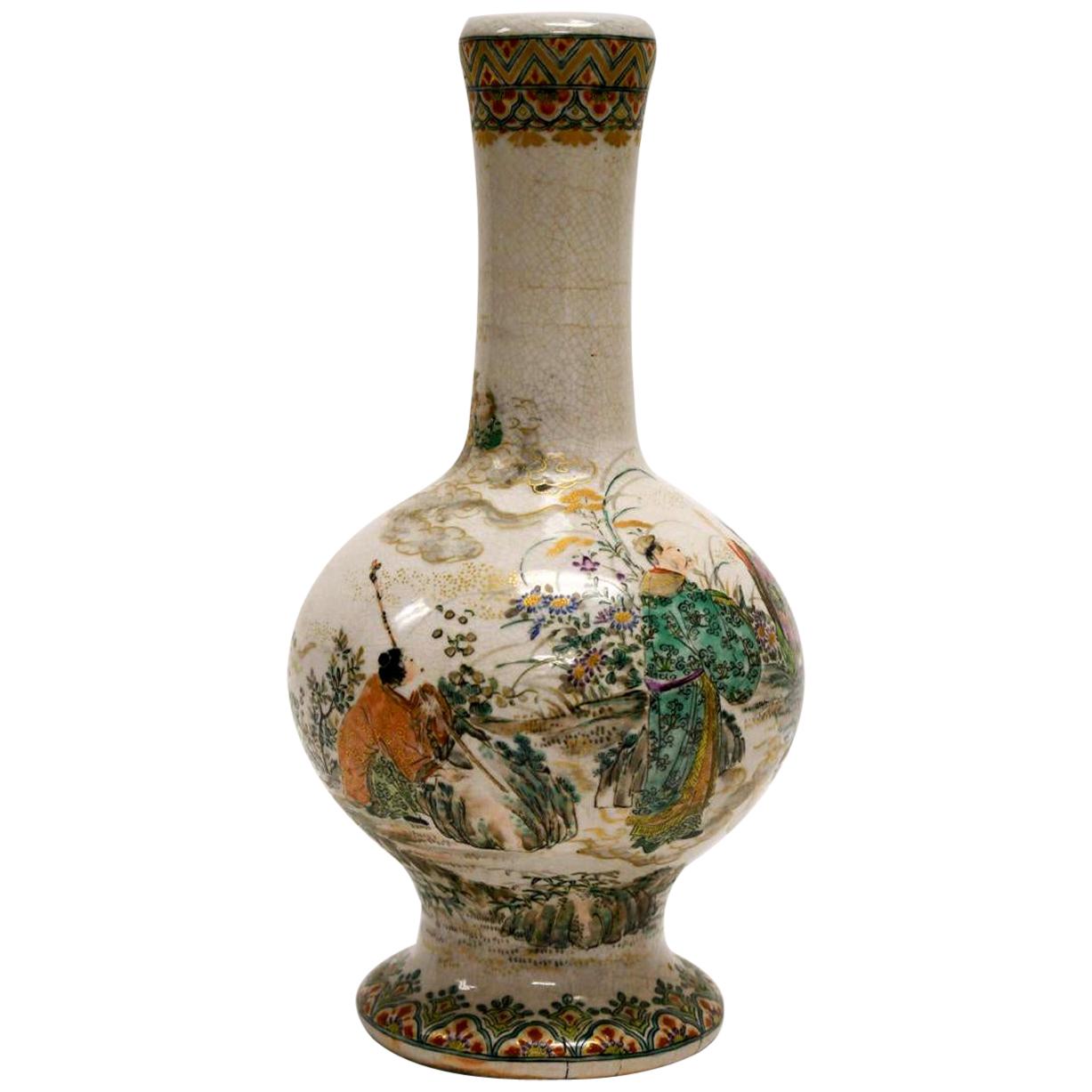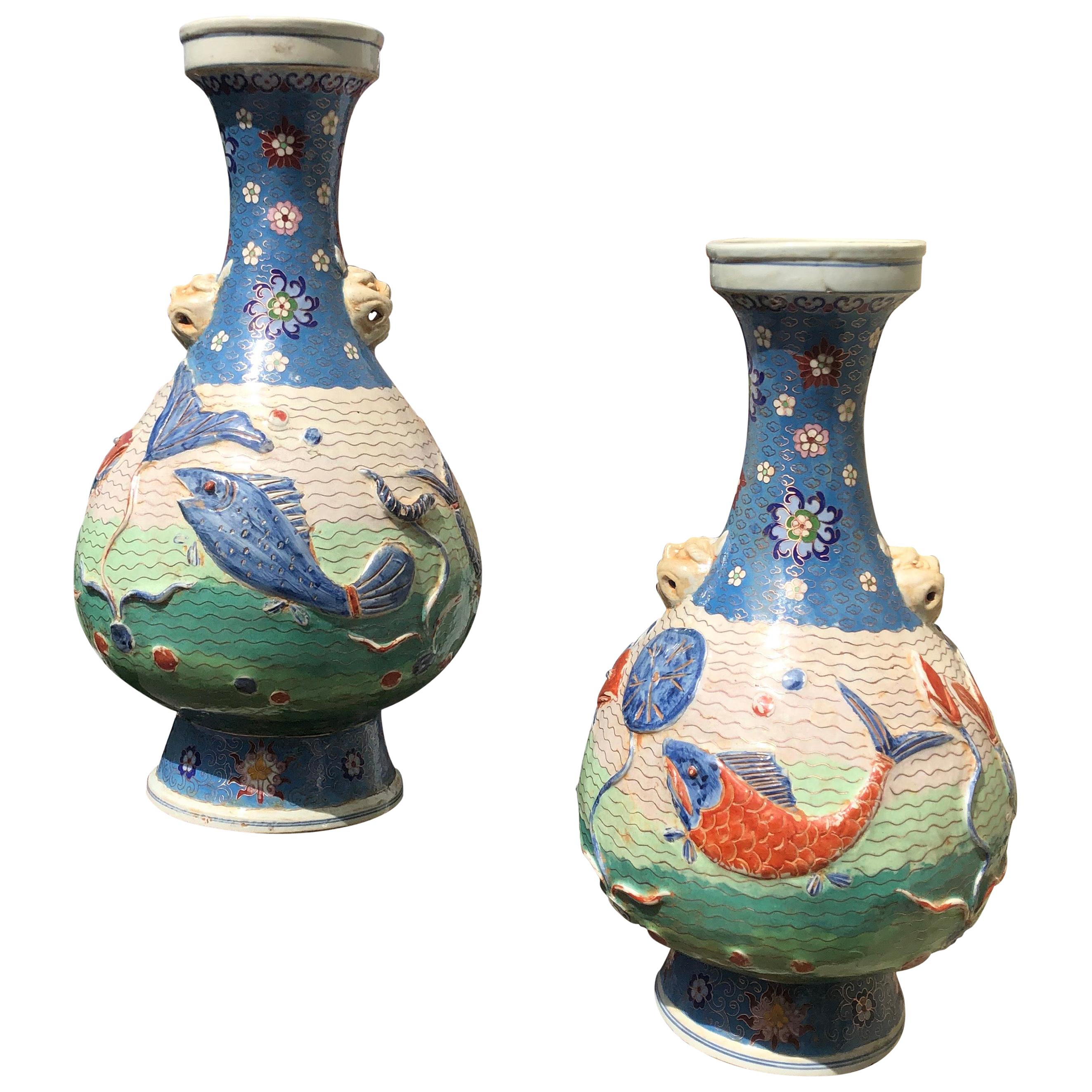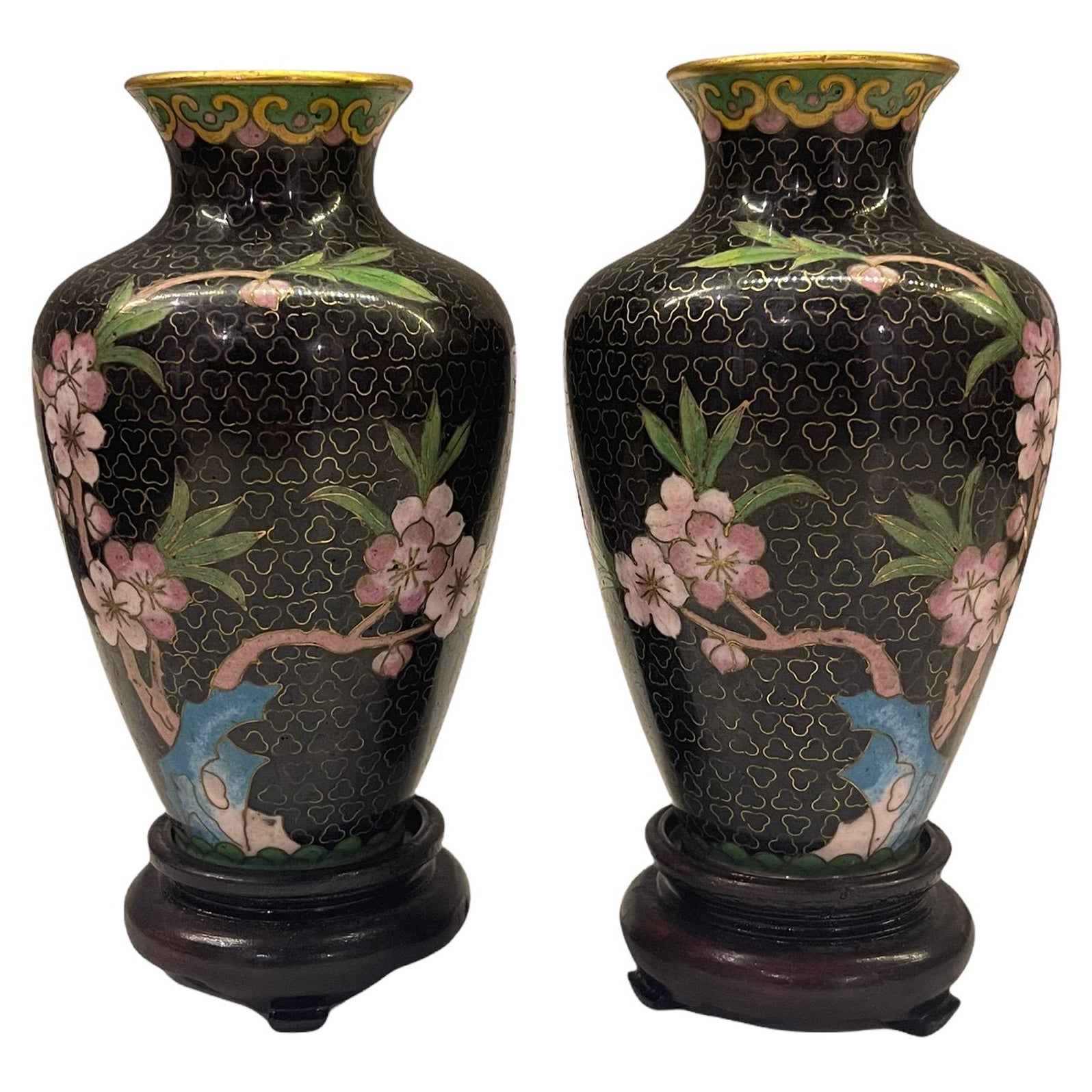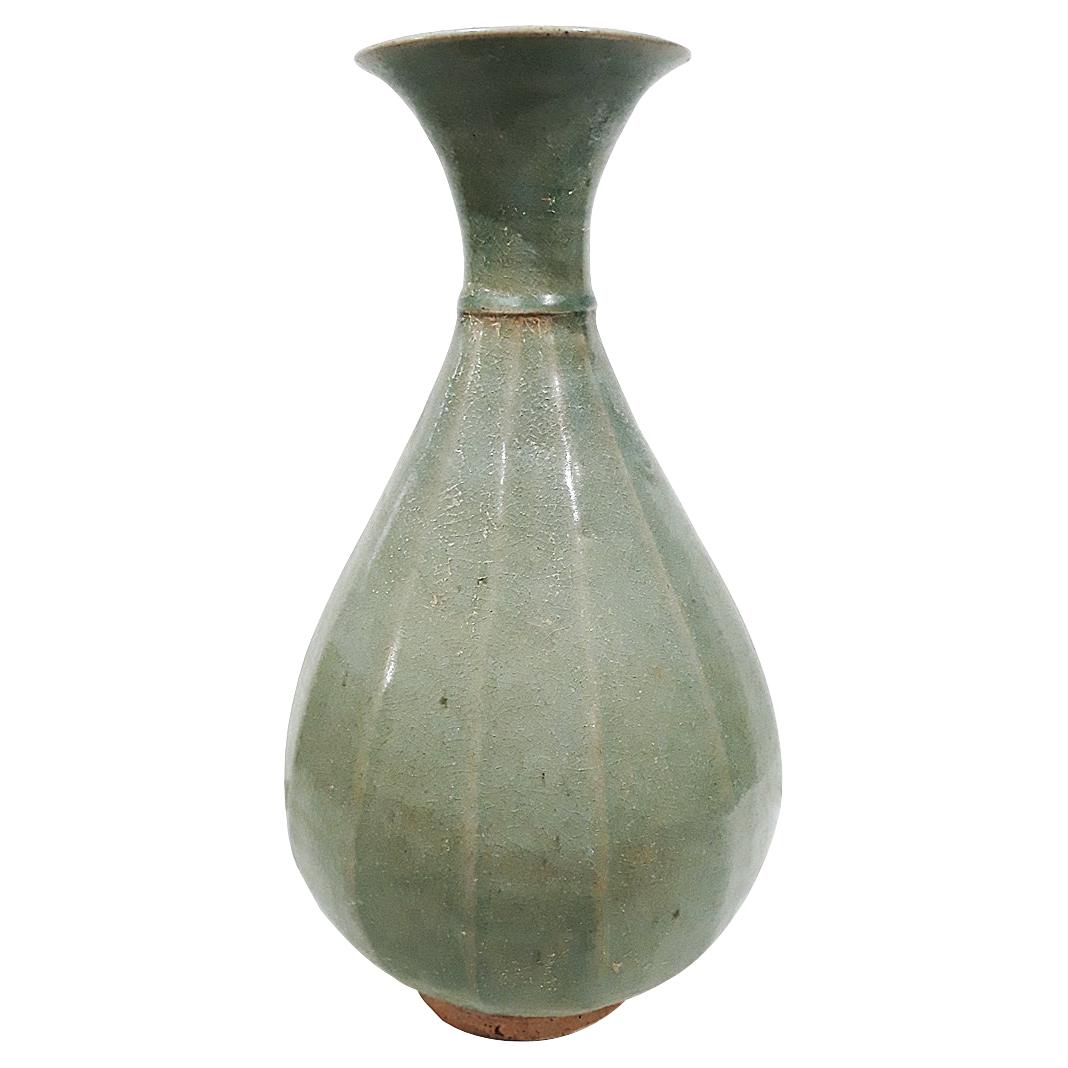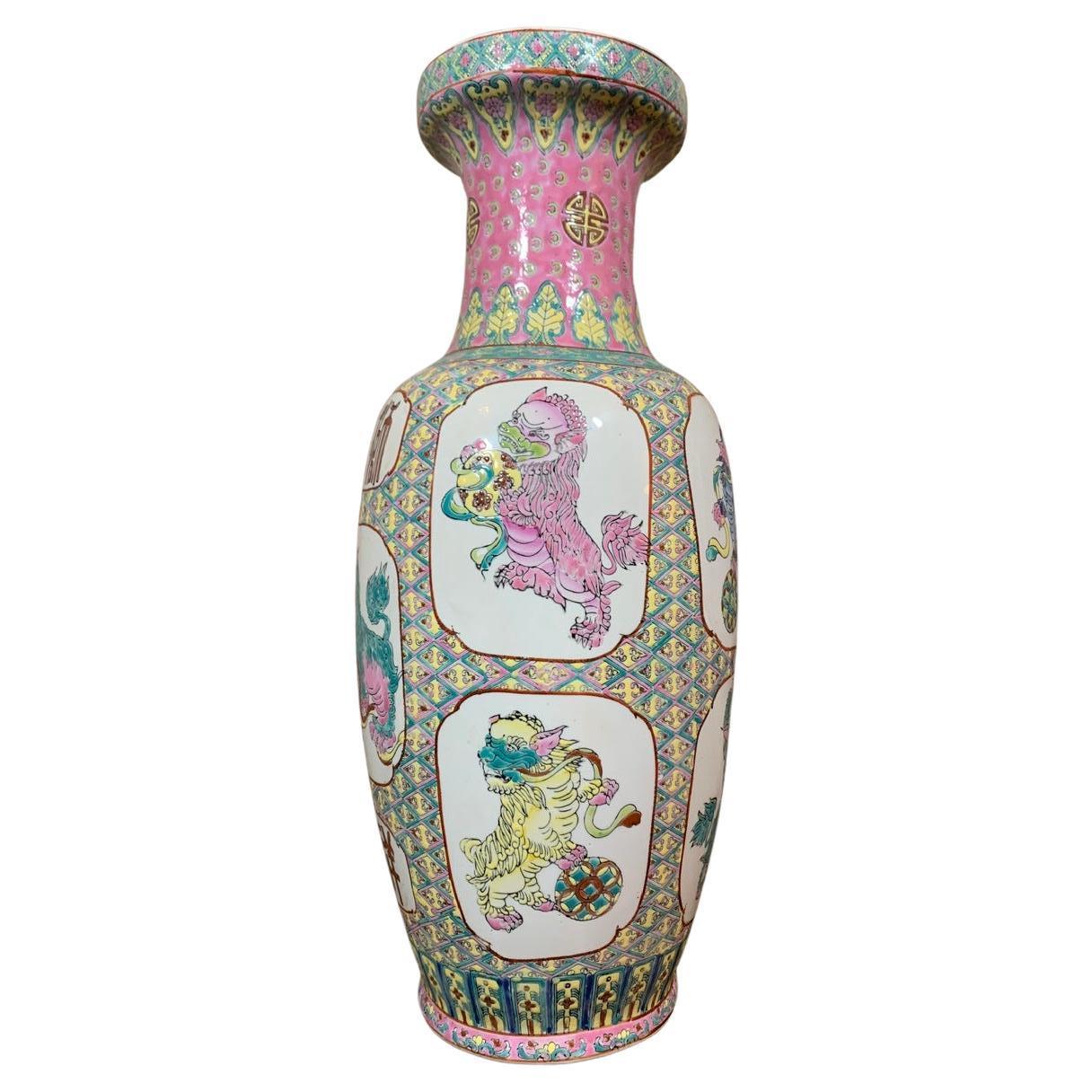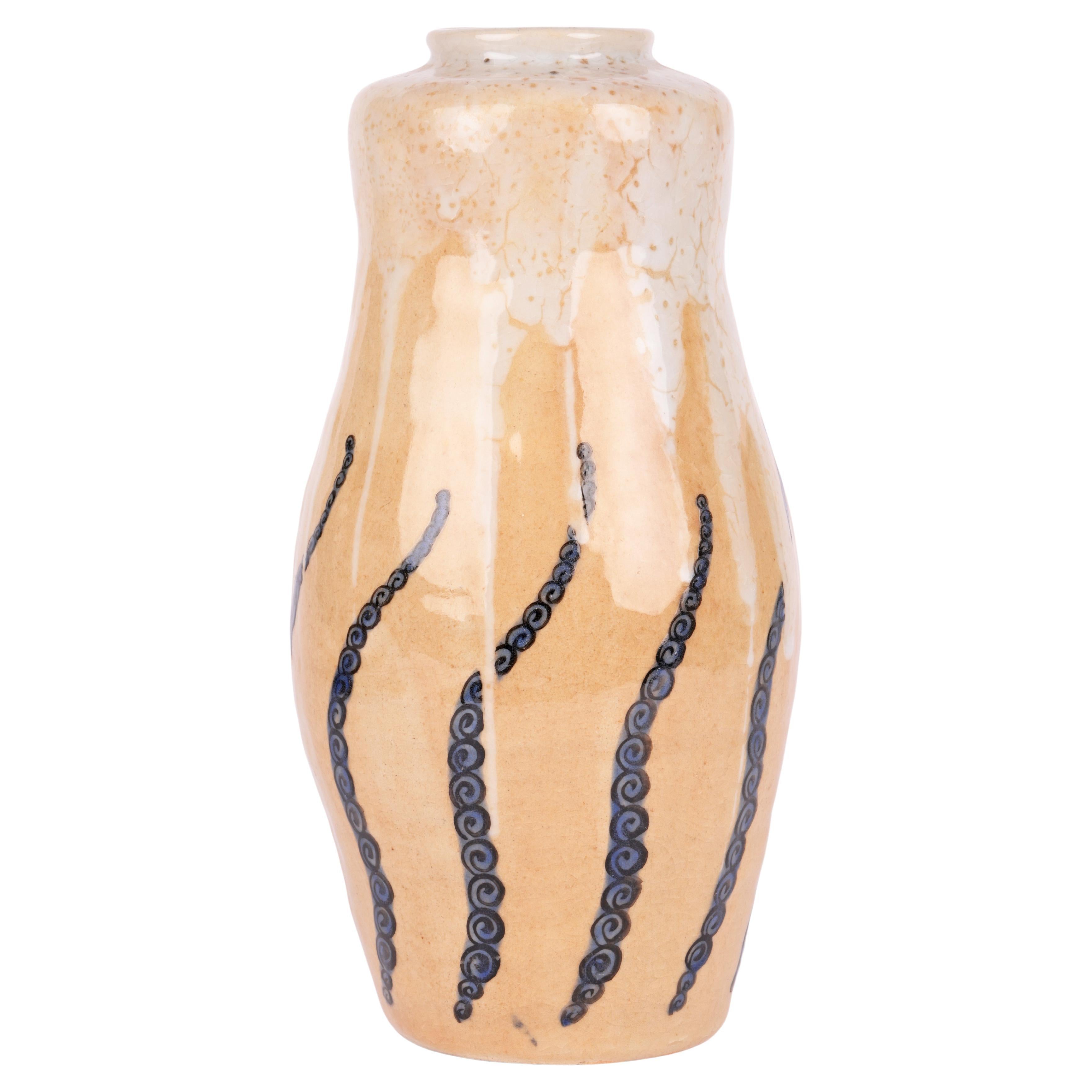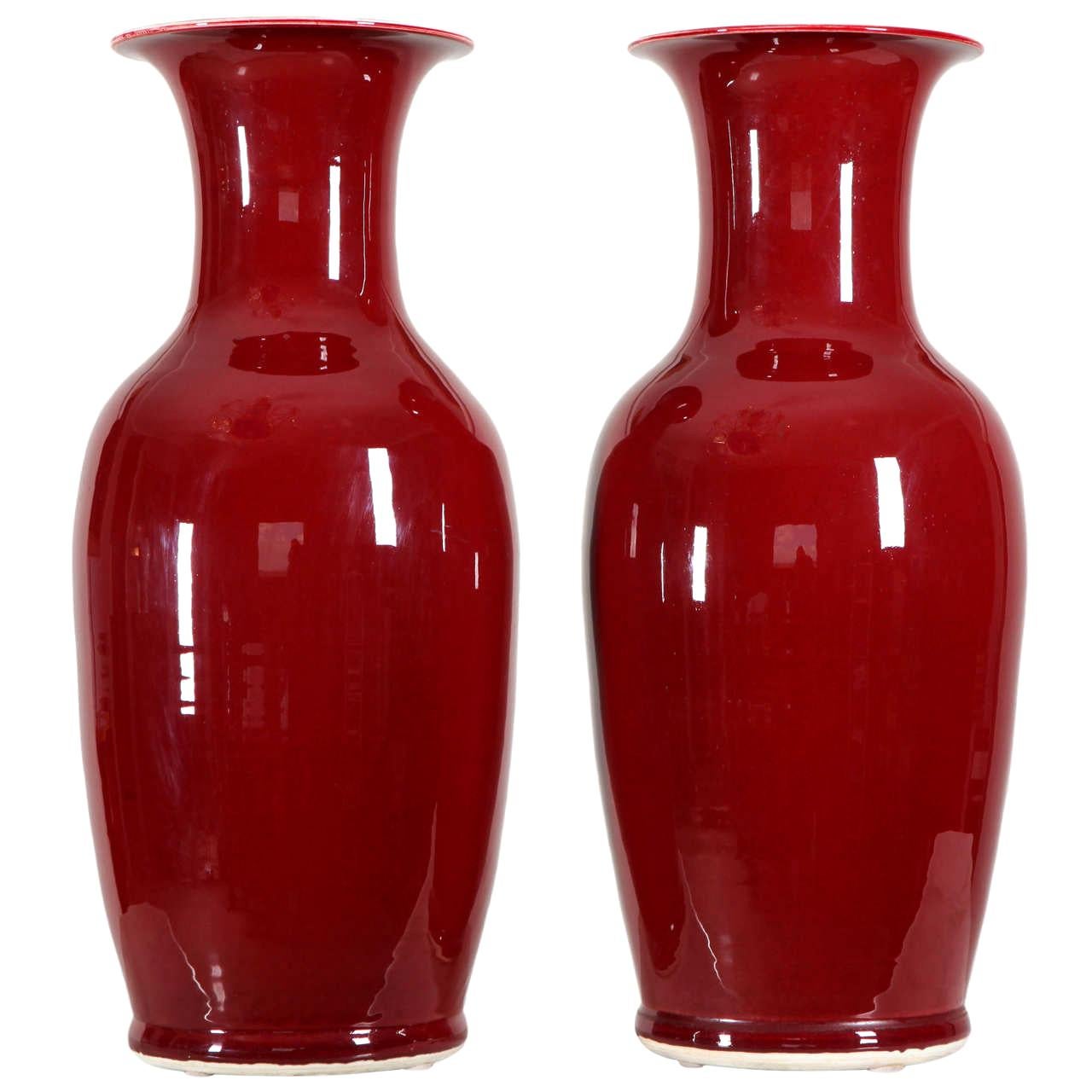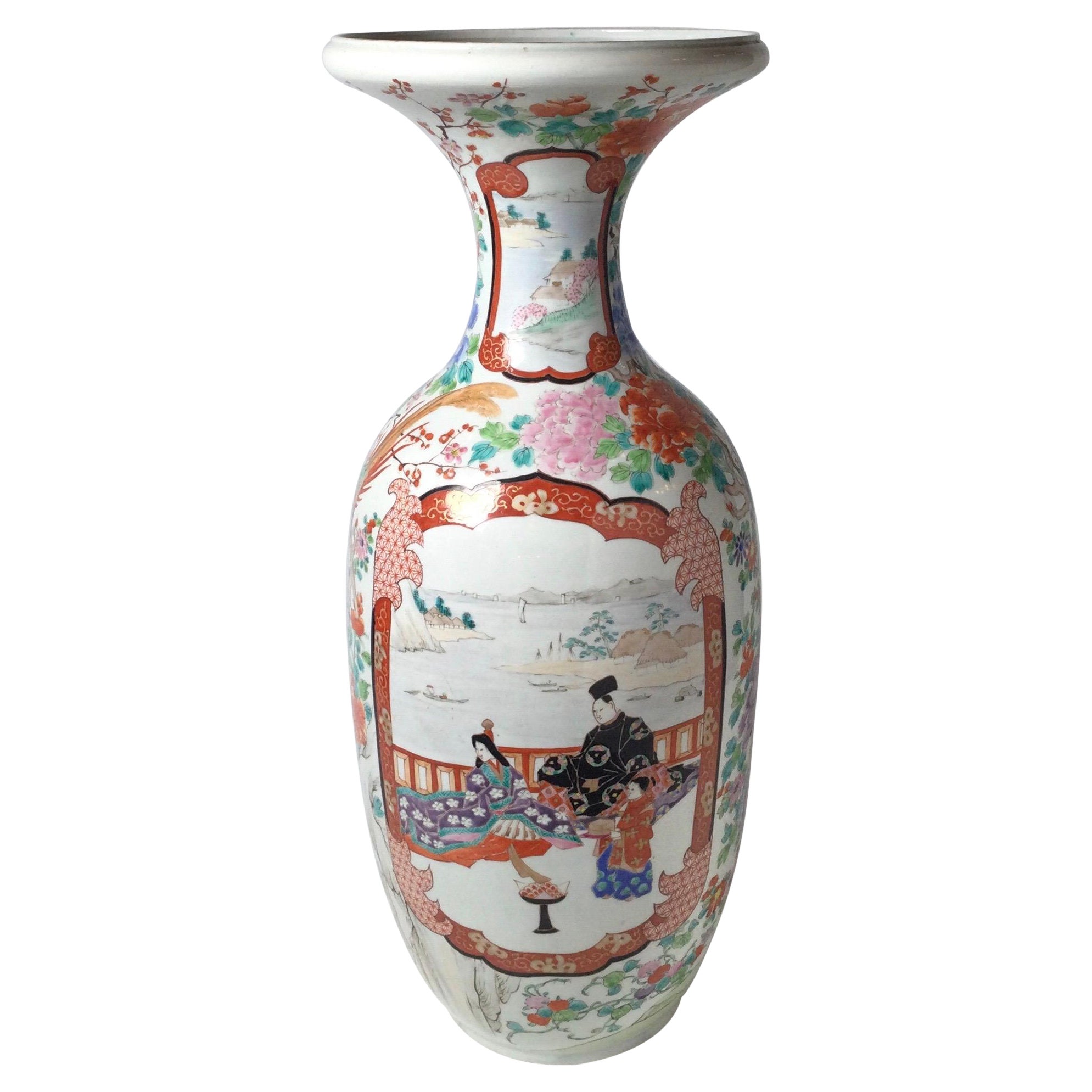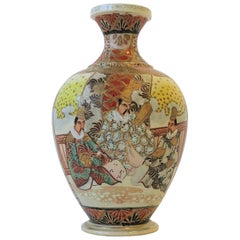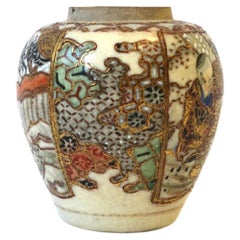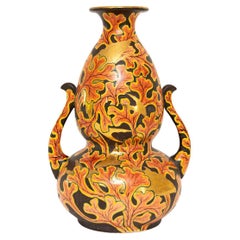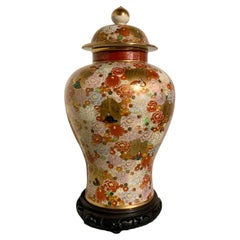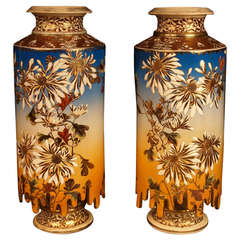
Pair of Unusual Satsuma Vases, Japan, Early 20th Century
View Similar Items
1 of 7
Pair of Unusual Satsuma Vases, Japan, Early 20th Century
About the Item
- Dimensions:Height: 17.72 in (45 cm)Diameter: 7.09 in (18 cm)
- Sold As:Set of 2
- Place of Origin:
- Period:
- Date of Manufacture:1900
- Condition:Wear consistent with age and use. Some drops have been professionaly restored.
- Seller Location:Paris, FR
- Reference Number:1stDibs: LU95211120180
Authenticity Guarantee
In the unlikely event there’s an issue with an item’s authenticity, contact us within 1 year for a full refund. DetailsMoney-Back Guarantee
If your item is not as described, is damaged in transit, or does not arrive, contact us within 7 days for a full refund. Details24-Hour Cancellation
You have a 24-hour grace period in which to reconsider your purchase, with no questions asked.Vetted Professional Sellers
Our world-class sellers must adhere to strict standards for service and quality, maintaining the integrity of our listings.Price-Match Guarantee
If you find that a seller listed the same item for a lower price elsewhere, we’ll match it.Trusted Global Delivery
Our best-in-class carrier network provides specialized shipping options worldwide, including custom delivery.You May Also Like
Japanese Satsuma Vase, Early 20th Century
Located in New York, NY
A beautiful Japanese Satsuma vase, circa early-20th century, late 1930s-1940s, Japan. Colors include red, black, gold, yellow, white, burgundy, green, and flesh tones. Dimensions: 5"...
Category
Vintage 1930s Japanese Ceramics
Materials
Ceramic, Earthenware, Pottery
$780 Sale Price
56% Off
Japanese Satsuma Ginger Jar Vase, circa Early 20th Century
Located in New York, NY
A beautiful small Japanese Satsuma ginger jar vase, circa early-20th century, Japan. Colors include cream, copper, green, blue, white, black, orange...
Category
Early 20th Century Japanese Meiji Vases
Materials
Ceramic, Earthenware, Pottery
Late 19th Early 20th Century Japanese, Meiji Satsuma Vase Double Gourd Shape
Located in New York, NY
Late 19th / early 20th century Japanese, Meiji Satsuma vase with a double gourd form. The design incorporates underwater plants with golden Koi Car...
Category
Antique Late 19th Century Japanese Meiji Ceramics
Materials
Ceramic
Large Japanese Satsuma Covered Vase, Showa Period, Mid 20th Century, Japan
Located in Austin, TX
A very large and exuberantly decorated Japanese Satsuma millefleur covered vase, marked Satsuma, Showa period, mid 20th century, Japan.
The large vase of attractive baluster form, with a slightly splayed foot, narrow waist, and tapered body with high shoulders and short neck. The vase topped by a domed cover with a large finial shaped like a hoju, the wish fulfilling jewel.
The vase decorated all over in a dense field of flowering blossoms - peony, lotus, and chrysanthemum - in a design known as millefleur, or a thousand flowers. The flowers freely and cheerfully painted in various colors of red, white, orange, green, blue and yellow, with raised white enamels...
Category
Mid-20th Century Japanese Showa Ceramics
Materials
Stoneware
Early Japanese Satsuma Antique Vase
By Satsuma
Located in Atlanta, GA
An Satsuma ceramic stone ware vase, circa 19th century, around the end of the Edo and the beginning of Meiji period. In the form of a Classic garlic bottle whose prototype was from China, the white bodied piece is decorated with an early form of kin nishikide, the so called golden brocade, a palette of iron-red, blue, green, yellow, purple and black with golden highlight. The over glazed enamel paint shows a group of robed figures in a garden setting with a lion and three tigers. A transparent overall glaze shows very fine crackles. The design is relatively sparse with plenty of negative space in contrast to the Satsuma production from the late 19th century, when the trend became fussy and overly glitz, due to the influence by the perceived western taste for the export market. This piece may still be made for export but its pattern was more influenced by both Kyoto Pottery and the Kano school of painting compared to the export ware by the end of the 19th century onward to the early 20th century. It was believed by many that this was a result of Satsuma potters visiting Kyoto in the late seventeenth century to learn over glaze painting techniques.
There are some age glaze crackles especially around the foot. The piece is not signed in keeping with the earlier production before Satsuma ceramics...
Category
Antique Mid-19th Century Japanese Japonisme Ceramics
Materials
Ceramic
$2,850 Sale Price
25% Off
Pair of early 20th Century Chinese Cloisonne Vases with Fish
Located in Richmond, VA
Pair of early 20th century Chinese cloisonne enameled porcelain bottle vases with mask handles, relief molded with fish in a lotus pond...
Category
20th Century Chinese Ceramics
Materials
Wire
Recently Viewed
View AllMore Ways To Browse
Pair Japanned Mirrors
Pair Of Japanese Mirrors
Pair Of Satsuma Vases
Satsuma Flower Vase
1900 Satsuma Vases
Meiji Mirror
Bleu Mirror
Satsuma Pair Blue Vase
Japanese Modern Vase
Tall Glass Vessel
German Vases Large
Large Ceramic Vessel Mid Century
German Modern Glass Vases
Vintage Metal Vase
White Furniture Company Bedroom
Purple Glass Vases
Large Glass Vase Clear
Antique Bird Vase
